Saba Dadsetan
Cross-Domain Self-Supervised Deep Learning for Robust Alzheimer's Disease Progression Modeling
Nov 15, 2022Abstract:Developing successful artificial intelligence systems in practice depends both on robust deep learning models as well as large high quality data. Acquiring and labeling data can become prohibitively expensive and time-consuming in many real-world applications such as clinical disease models. Self-supervised learning has demonstrated great potential in increasing model accuracy and robustness in small data regimes. In addition, many clinical imaging and disease modeling applications rely heavily on regression of continuous quantities. However, the applicability of self-supervised learning for these medical-imaging regression tasks has not been extensively studied. In this study, we develop a cross-domain self-supervised learning approach for disease prognostic modeling as a regression problem using 3D images as input. We demonstrate that self-supervised pre-training can improve the prediction of Alzheimer's Disease progression from brain MRI. We also show that pre-training on extended (but not labeled) brain MRI data outperforms pre-training on natural images. We further observe that the highest performance is achieved when both natural images and extended brain-MRI data are used for pre-training.
No-Reference Image Quality Assessment via Transformers, Relative Ranking, and Self-Consistency
Aug 16, 2021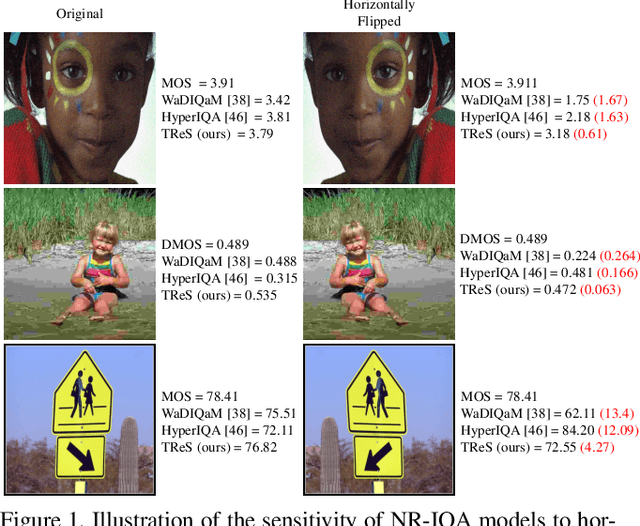
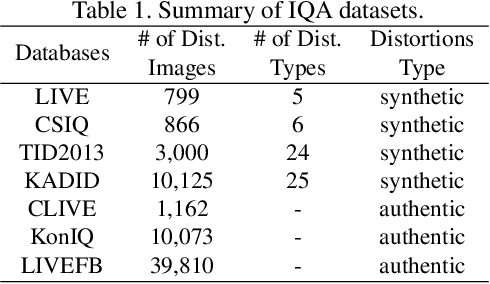


Abstract:The goal of No-Reference Image Quality Assessment (NR-IQA) is to estimate the perceptual image quality in accordance with subjective evaluations, it is a complex and unsolved problem due to the absence of the pristine reference image. In this paper, we propose a novel model to address the NR-IQA task by leveraging a hybrid approach that benefits from Convolutional Neural Networks (CNNs) and self-attention mechanism in Transformers to extract both local and non-local features from the input image. We capture local structure information of the image via CNNs, then to circumvent the locality bias among the extracted CNNs features and obtain a non-local representation of the image, we utilize Transformers on the extracted features where we model them as a sequential input to the Transformer model. Furthermore, to improve the monotonicity correlation between the subjective and objective scores, we utilize the relative distance information among the images within each batch and enforce the relative ranking among them. Last but not least, we observe that the performance of NR-IQA models degrades when we apply equivariant transformations (e.g. horizontal flipping) to the inputs. Therefore, we propose a method that leverages self-consistency as a source of self-supervision to improve the robustness of NRIQA models. Specifically, we enforce self-consistency between the outputs of our quality assessment model for each image and its transformation (horizontally flipped) to utilize the rich self-supervisory information and reduce the uncertainty of the model. To demonstrate the effectiveness of our work, we evaluate it on seven standard IQA datasets (both synthetic and authentic) and show that our model achieves state-of-the-art results on various datasets.
Superpixels and Graph Convolutional Neural Networks for Efficient Detection of Nutrient Deficiency Stress from Aerial Imagery
Apr 22, 2021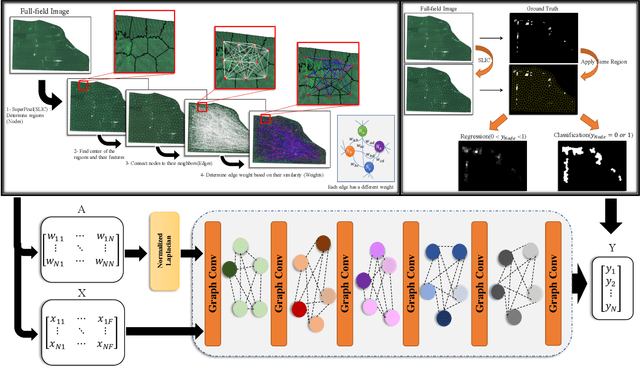

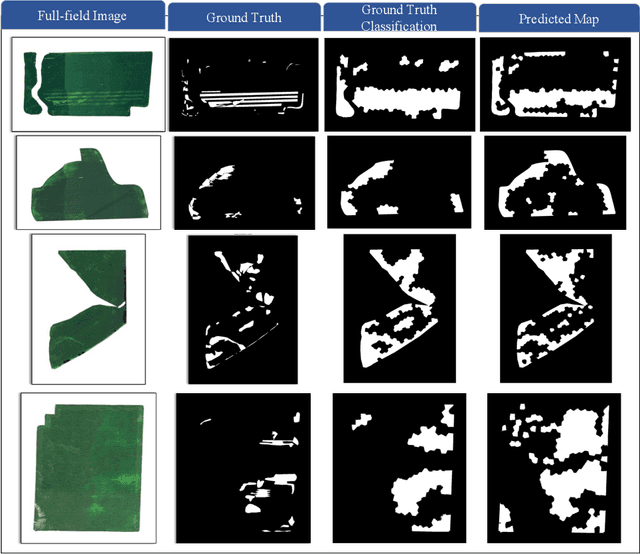
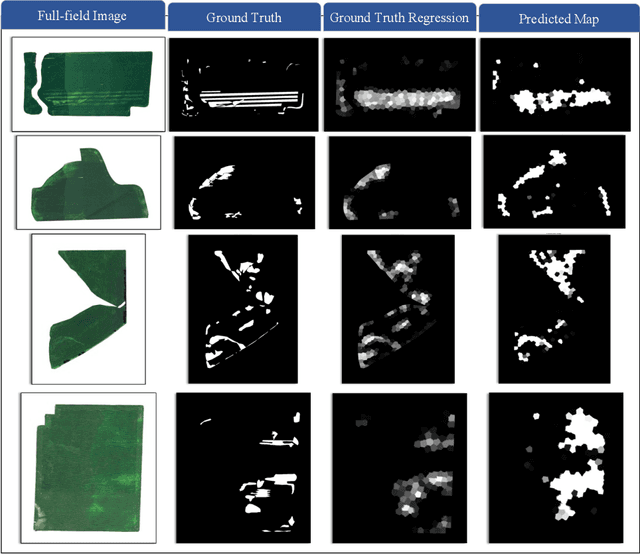
Abstract:Advances in remote sensing technology have led to the capture of massive amounts of data. Increased image resolution, more frequent revisit times, and additional spectral channels have created an explosion in the amount of data that is available to provide analyses and intelligence across domains, including agriculture. However, the processing of this data comes with a cost in terms of computation time and money, both of which must be considered when the goal of an algorithm is to provide real-time intelligence to improve efficiencies. Specifically, we seek to identify nutrient deficient areas from remotely sensed data to alert farmers to regions that require attention; detection of nutrient deficient areas is a key task in precision agriculture as farmers must quickly respond to struggling areas to protect their harvests. Past methods have focused on pixel-level classification (i.e. semantic segmentation) of the field to achieve these tasks, often using deep learning models with tens-of-millions of parameters. In contrast, we propose a much lighter graph-based method to perform node-based classification. We first use Simple Linear Iterative Cluster (SLIC) to produce superpixels across the field. Then, to perform segmentation across the non-Euclidean domain of superpixels, we leverage a Graph Convolutional Neural Network (GCN). This model has 4-orders-of-magnitude fewer parameters than a CNN model and trains in a matter of minutes.
Detection and Prediction of Nutrient Deficiency Stress using Longitudinal Aerial Imagery
Dec 17, 2020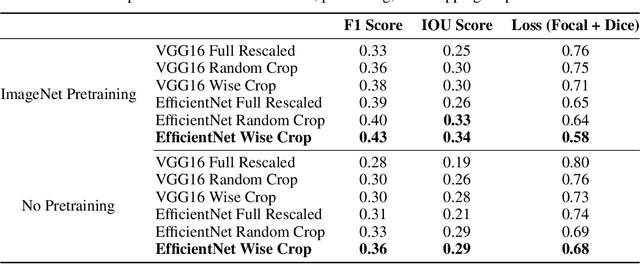
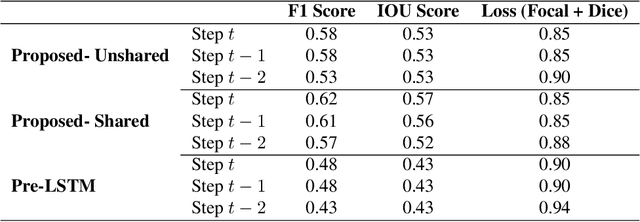
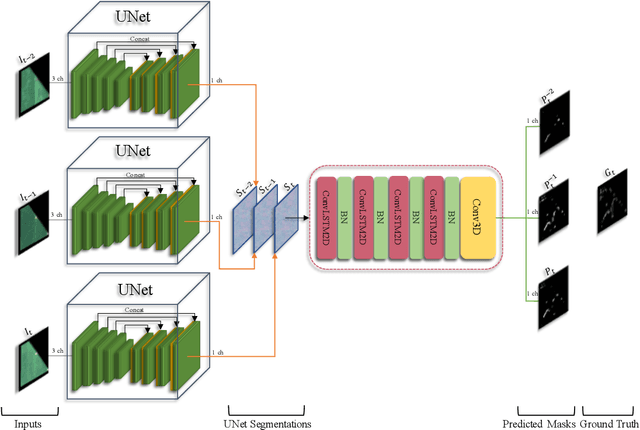
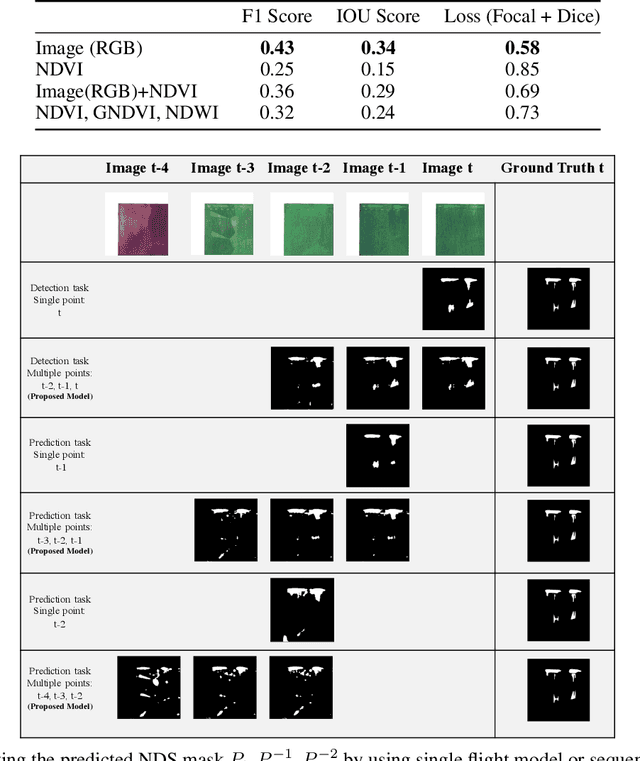
Abstract:Early, precise detection of nutrient deficiency stress (NDS) has key economic as well as environmental impact; precision application of chemicals in place of blanket application reduces operational costs for the growers while reducing the amount of chemicals which may enter the environment unnecessarily. Furthermore, earlier treatment reduces the amount of loss and therefore boosts crop production during a given season. With this in mind, we collect sequences of high-resolution aerial imagery and construct semantic segmentation models to detect and predict NDS across the field. Our work sits at the intersection of agriculture, remote sensing, and modern computer vision and deep learning. First, we establish a baseline for full-field detection of NDS and quantify the impact of pretraining, backbone architecture, input representation, and sampling strategy. We then quantify the amount of information available at different points in the season by building a single-timestamp model based on a UNet. Next, we construct our proposed spatiotemporal architecture, which combines a UNet with a convolutional LSTM layer, to accurately detect regions of the field showing NDS; this approach has an impressive IOU score of 0.53. Finally, we show that this architecture can be trained to predict regions of the field which are expected to show NDS in a later flight -- potentially more than three weeks in the future -- maintaining an IOU score of 0.47-0.51 depending on how far in advance the prediction is made. We will also release a dataset which we believe will benefit the computer vision, remote sensing, as well as agriculture fields. This work contributes to the recent developments in deep learning for remote sensing and agriculture, while addressing a key social challenge with implications for economics and sustainability.
 Add to Chrome
Add to Chrome Add to Firefox
Add to Firefox Add to Edge
Add to Edge